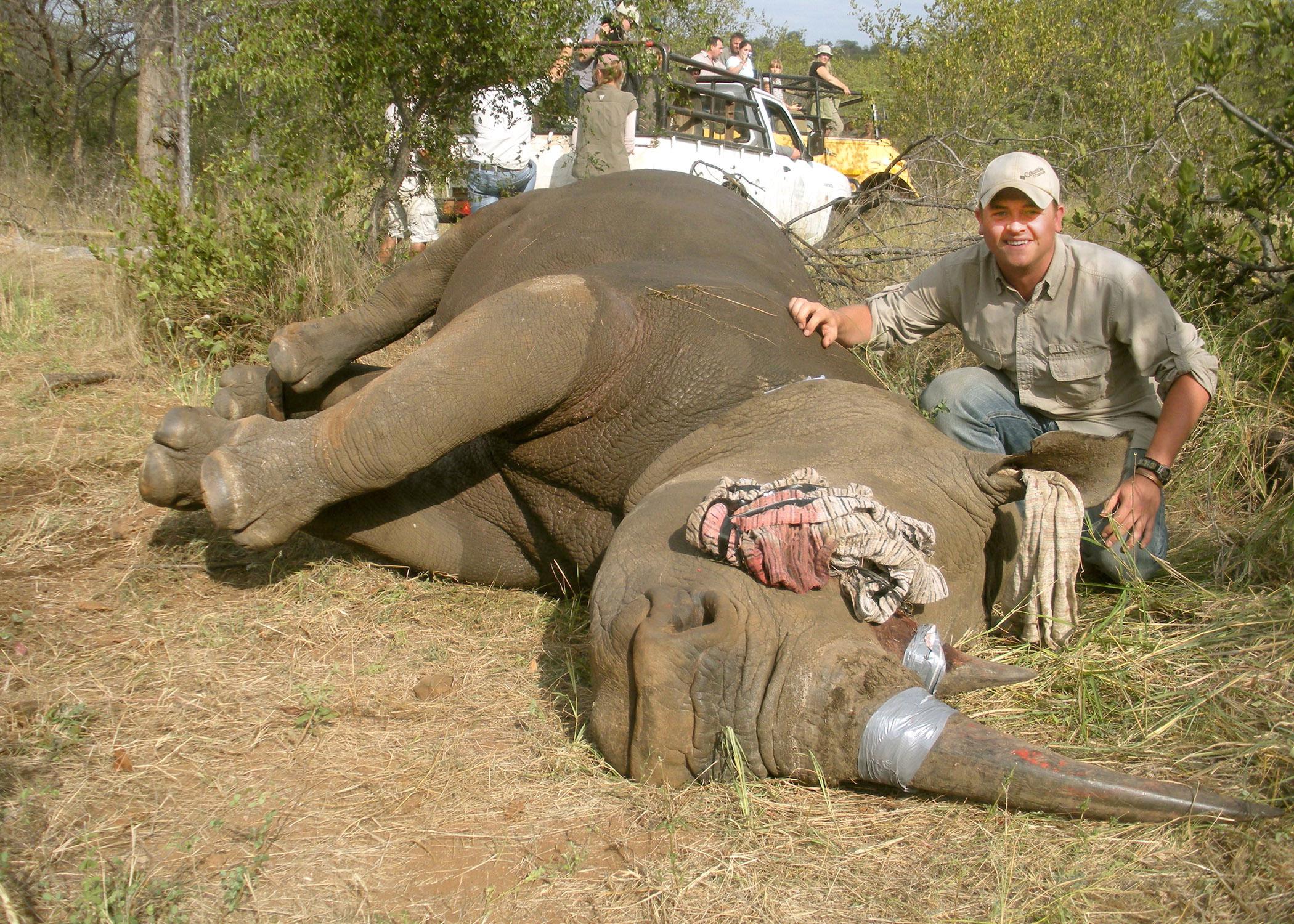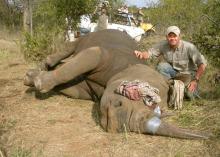Information Possibly Outdated
The information presented on this page was originally released on June 2, 2014. It may not be outdated, but please search our site for more current information. If you plan to quote or reference this information in a publication, please check with the Extension specialist or author before proceeding.
Summer in South Africa widened students' horizons
MISSISSIPPI STATE -- When Mississippi State University senior Will Gentry went to Africa in 2013 for a short visit to expand his academic horizons, he ended up staying longer and working to conserve popular big-game animals.
Gentry, who grew up on a farm in Pontotoc, spent seven weeks last summer in South Africa with the African Conservation Experience. He spent weekdays working alongside a veterinarian who helped facilitate the buying, selling and trading of animals living on reserves. In 2013, he earned a bachelor’s degree from MSU in animal and dairy sciences and is pursuing a graduate degree at MSU.
“The majority of the land in South Africa is privately owned, and plots are upwards of 30,000 hectares [almost 116 square miles],” Gentry said. “Each has a high fence and is a wildlife reserve where they offer either big-game hunts or big-game safaris.”
Although different populations of animals live naturally on these reserves, owners buy, sell and trade to keep their numbers and diversity high. Owners carefully monitor populations of the Big Five game animals: Cape buffalo, white rhinos, elephants, lions and leopards. These are among the most popular species for big-game hunters to stalk.
“Tourism is a huge part of the South African economy, and if you can guarantee that you have the big-game animals on your place, then people are more likely to book their trips through you,” he said.
Gentry signed up for the program to work with a veterinarian on a team that essentially serves as brokers of Big Five animals.
“If a certain reserve had an excess of giraffes and wanted to sell some, we would find a buyer and go in and dart those animals, remove them ourselves and take them to the new place,” he said. “I didn’t do any cat work while I was there, and we didn’t dart any elephants. I worked with 30 or more rhinos and did tons of buffalo work.”
The reserves have an intricate system of management for their safari animals. Disease control, animal tracking and herd health are full-time jobs as owners ensure top-quality hunting or safari experiences for their visitors.
While Gentry enjoyed this work, he found his passion working as a volunteer on the weekends with the Rhino Rescue Project. This service stretched what was supposed to be a two-week stay into seven weeks.
“After I got over there, I saw how big this issue is and how uncontrollable poaching is,” Gentry said.
Poachers enter enclosed game reserves to kill rhinos and other animals for their ivory horns.
“Because of extreme poverty, poachers are willing to risk their lives to steal from someone,” he said. “They’re not going to waste any extra time to guard the life of the animal, so they just shoot the rhinos, cut off the horn and get out.”
African officials have tried many methods to prevent poaching, including dehorning the rhinos, but each method has drawbacks. The Rhino Rescue Project uses a new technique that involves infusing rhino horns with an antiparasitic drug colored with an indelible dye. The chemical is used externally in diluted amounts to kill pests that live on a rhino’s body.
“Reserves would pay for us to come out, dart the rhinos, drill into their horns with a machine similar to an air compressor, and infuse the horn with the ectoparisiticide,” Gentry said.
If an infused horn is cut off a rhino, the chemical produces fumes potent enough to make the poacher extremely nauseated. The indelible dye -- the same material banks use in explosive dye packs to foil robbers -- permanently stains the inside of a horn pink, marring its sale value but leaving no visible external sign.
“A lot of animals are being brutally massacred for their horns. Our goal was to make it worthless,” Gentry said. “The idea is to not allow any external signs that this animal has been infused. It’s impossible to infuse the horns on every rhino, but if you can’t determine externally if a horn has been infused, the poachers won’t be able to either.”
The process is expensive and time-consuming, and reserves may not be able to treat all their rhinos. But owners can spread the word that rhinos on their reserves have been treated with this technique. Anyone attempting to poach on these reserves runs the risk of becoming ill while harvesting a worthless, infused horn.
“When we would go to a reserve to infuse the rhinos, we would invite out the local schools, the fire departments and other interested locals to watch us do the first two or three rhinos,” Gentry said. “We told them how sick it would make them if they cut into a horn that has been infused.
“Poachers pay off people for information, so we wanted as many people as possible to know that rhinos on this reserve have been infused,” he said.
Gentry, the son of Carla and Matt Lunn of Pontotoc, intends to work in bovine medicine after graduation.
“I have a passion for the developments that have been made in the last few years in the food industry that make it so much more efficient,” he said. “I want to work in the food-animal industry.”
Gentry was one of four MSU students who spent time in South Africa working on reserves last summer. Gentry’s stay was longest, but Laura Reed, Morgan Sullivan and Krista McCollum each spent two weeks in the country working with safari animals.
John Blanton, head of the MSU Department of Animal and Dairy Sciences, said the college years are an ideal time to experience the variety of careers available in a chosen field.
“We encourage our students to take advantage of extracurricular activities to expand their horizons while still in school,” Blanton said. “International travel and work gives students a whole different perspective on their future careers and allows them to take advantage of different opportunities than are available in the U.S.”









